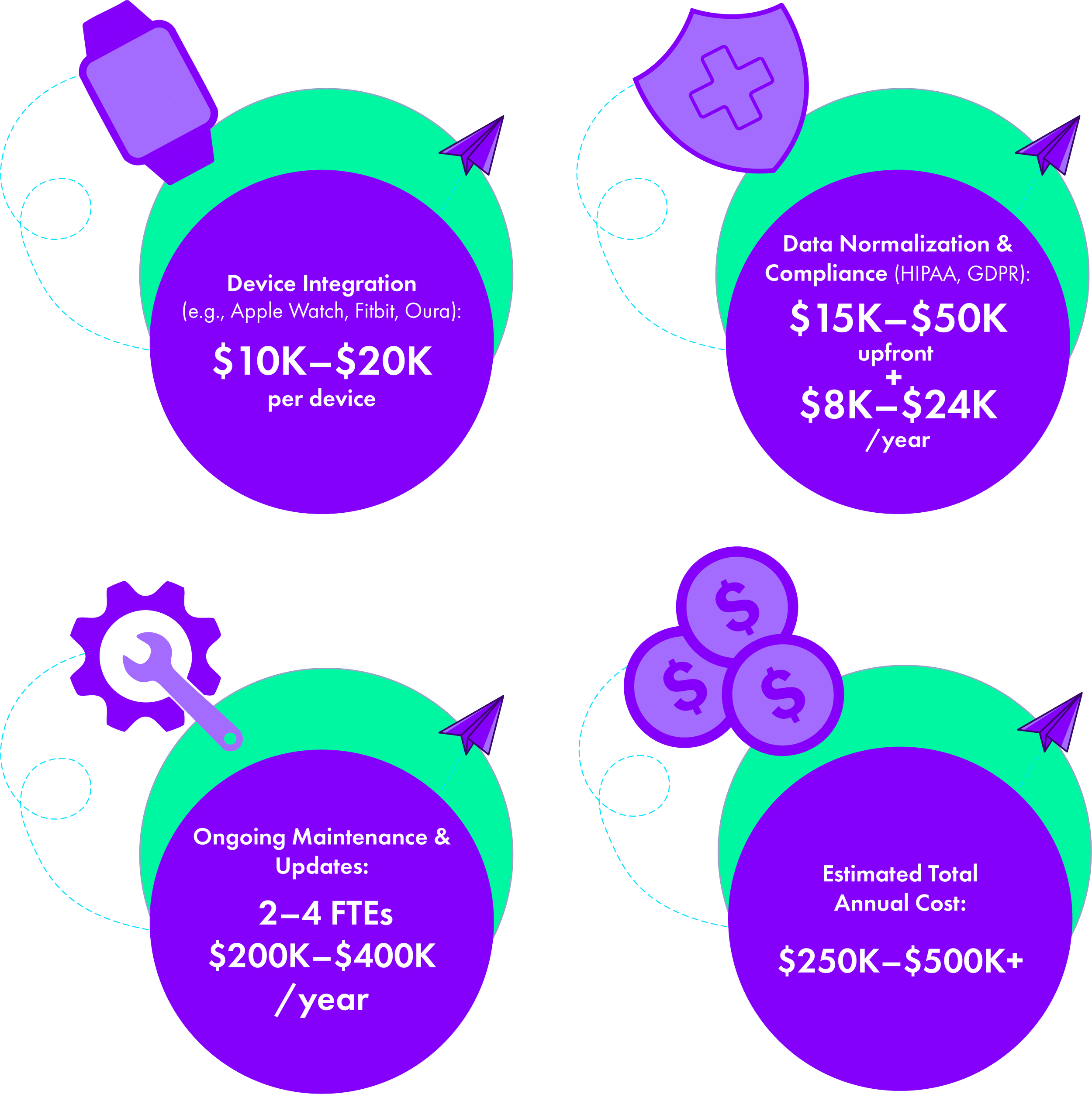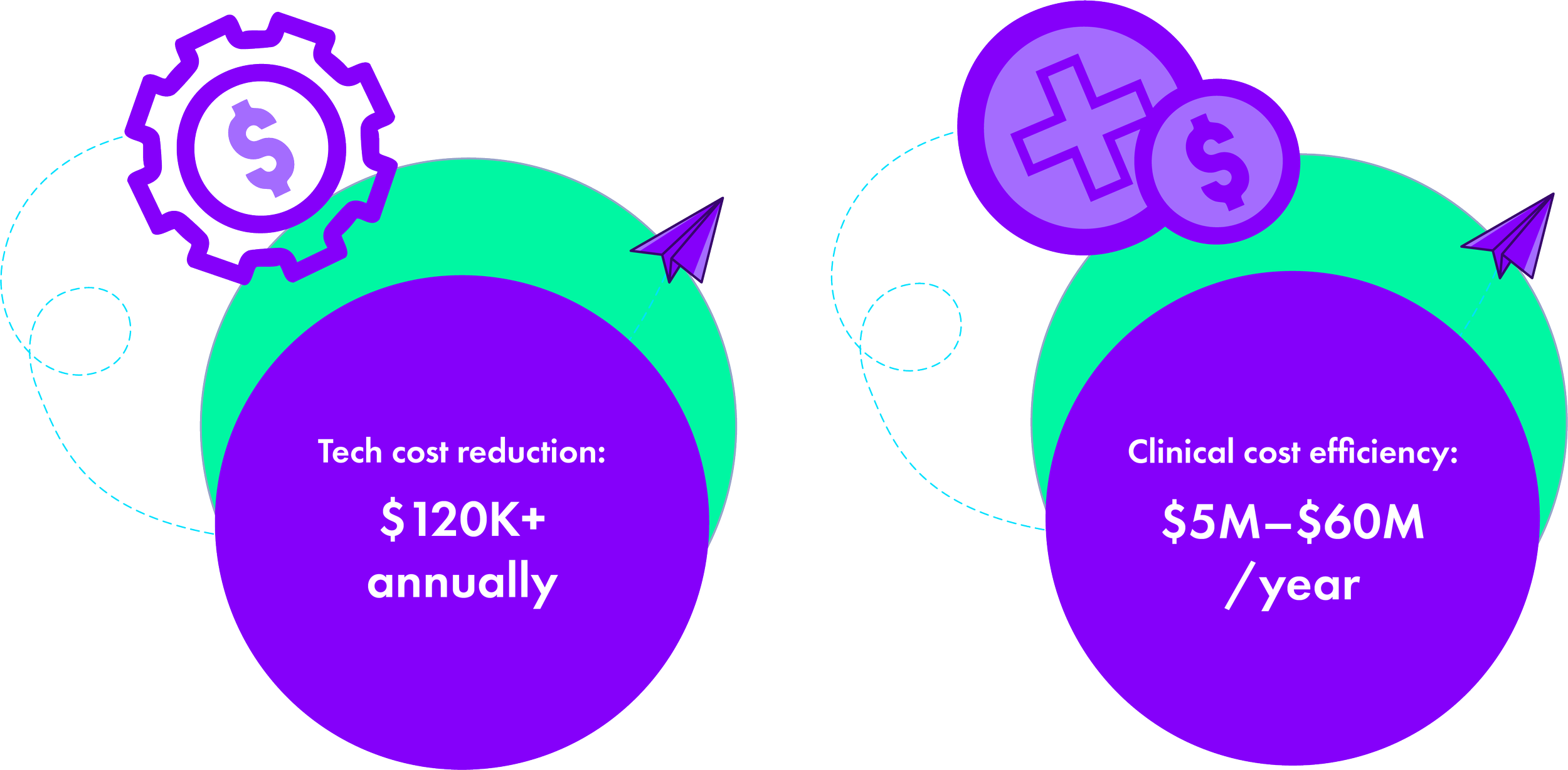ROOK Case Study: Savings and Strategic Advantages Over In-House Wearable Integrations
In today’s competitive landscape, companies across industries are looking for ways to reduce costs, accelerate product development, and drive more value from their digital health solutions. In the wearable tech space, one of the most significant choices businesses face is whether to build their own wearable integrations in-house or to leverage a specialized platform like ROOK.
This case study explores how using ROOK instead of developing in-house wearable integrations not only saves costs but also offers strategic advantages across industries like insurance, healthcare, and fitness & wellness.
1. Building vs. ROOK: Cost Analysis
In-House Cost Breakdown
Building wearable integrations internally involves significant upfront and ongoing costs:
ROOK Cost Structure
ROOK offers a unified API with 300+ wearable device integrations, including built-in HIPAA/GDPR compliance and continuous data normalization, all at a fraction of the cost:
(For small and medium sized companies even a lot cheaper)
By leveraging ROOK, businesses avoid the high costs associated with building, maintaining, and updating in-house systems. Instead, they can focus their resources on scaling their solutions and growing their business.
2. Strategic Upside by Sector
Insurance
Cost Savings:
Risk modeling improved by 30% with wearable data → reduced claims costs
Claims processing reduced by 10–20% via continuous data streams
Revenue Growth:
Healthier customer segments = reduced premium discounts
A 10% healthier risk pool = +$50–$100 margin per policy/year
For 100K policyholders: $5M–$10M in revenue gain
Summary:
Healthcare
Operational Savings:
10% reduction in hospital readmissions = $2,500 saved per patient
Chronic care costs decrease by 5–15% with continuous monitoring
Example Impact:
250K-member payer, 5% utilization = 12,500 patients
Potential savings: $30M–$60M/year
Summary:
Fitness & Wellness
Build Savings:
Internal integration of 50+ devices = $500K+ one-time + ongoing maintenance costs
Engagement & Retention Boost:
ROOK enables 10x activity tracking types
Improved user retention by 15–25% → +$50–$150/user/year
Revenue Uplift:
For 50K users @ $150/user: $1.5M in revenue uplift
Profit gain with 70% margin: ~$1M/year
Summary:
3. Summary Table
4. Conclusion
By choosing ROOK over building in-house wearable integrations, companies can:
Save $120K–$320K annually in integration and maintenance costs
Accelerate time-to-market by months, with minimal development overhead
Unlock significant upside: $5M–$60M/year in revenue, depending on the industry and scale
ROOK not only reduces the technical burden but also enables product differentiation, faster iterations, and healthier user engagement across sectors like insurance, healthcare, and wellness.







